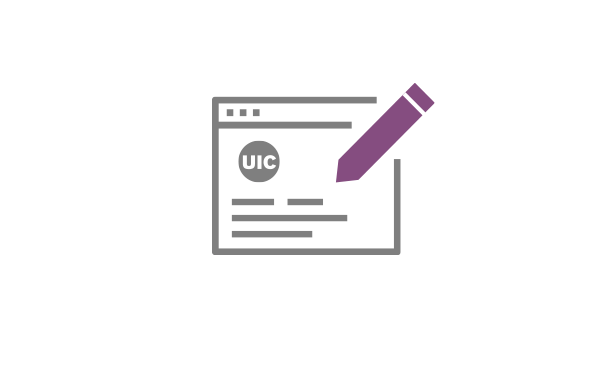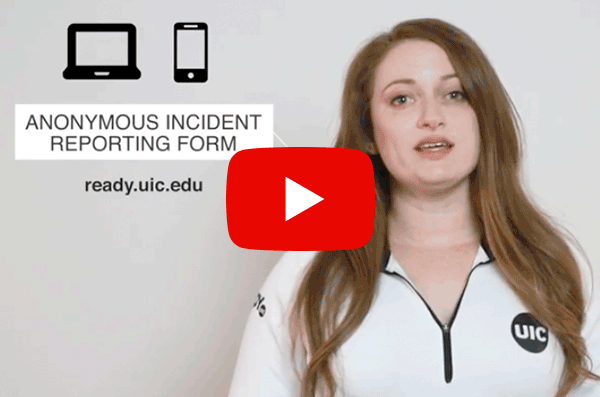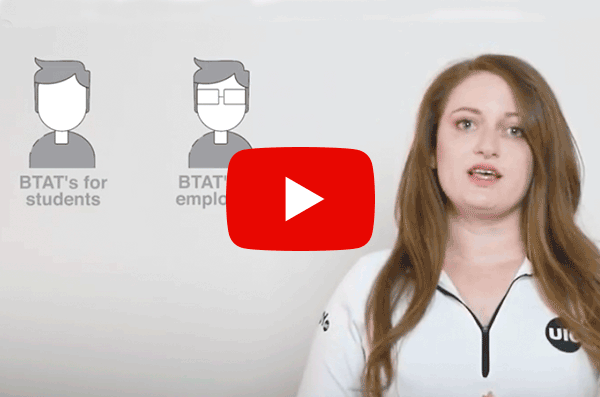Share your concerns
Introduction
The following are the primary points of contact for reporting threats or acts of violence, or other concerning behavior, for the purpose of violence prevention at the University of Illinois Chicago.
Submit BTAT Report Form
Intake, review, and potential outcomes of reports made to BTAT
Intake, review, and potential outcomes of reports made to BTAT
The goal of responding to concerns reported to the BTAT is to address the concerning behavior, remedy its effects on the community, and maintain a safe campus environment while supporting the student’s or employee’s success at UIC, to the extent possible.
Once a report is submitted to the UIC BTAT through the BTAT Report Form, the following process is followed:
- Report is logged in a secure database managed by the Office for Access and Equity and the Office of the Dean of Students.
- Notification is sent to the Office for Access and Equity, Human Resources, and the Office of the Dean of Students.
- Report is reviewed by the Chair(s) of both BTAT, during normal business hours (Mon.-Fri., 9 a.m.-5 p.m.), to determine case assignment, prioritization, and resource allocation.
- A meeting among the core members of the BTAT may be called to discuss the report.
- Reporting person will be contacted to confirm receipt of information, however, the reporting person will not necessarily be informed of the outcome of the report.
- Additional information may be requested from the reporting person or others who are involved or may have information.
Potential outcomes of reported student behavior
The outcome of reports made to the BTAT-S may include, but is not limited to the following:
- Recommend no action, pending further observation.
- Refer report to the UIC Campus Awareness, Response, & Education Team (CARE Team).
- Coordinate with relevant stakeholders (e.g., the student’s academic dean, faculty members, Campus Housing staff, or others) to develop a plan of action to address the concern(s).
- Refer student to existing on-campus support resources.
- Refer student to appropriate community resources.
- Initiate a full inquiry/fact-based behavioral threat assessment including ad-hoc members of the BTAT.
- Make recommendations consistent with university policies and procedures.
Specific examples of outcomes may include, but are not limited to:
- Addressing the concern through the Student Conduct Process when there is a violation of the Student Disciplinary Policy.
- Connecting the student of concern with the UIC Counseling Center.
- Discussing behavioral expectations with the student of concern and the impact of their behavior.
Potential outcomes of reported employee behavior
The outcome of reports made to the BTAT-E may include, but is not limited to the following:
- Recommend no action, pending further observation.
- Assist supervisors or unit heads in developing a plan of action to address the concern(s).
- Refer employee to existing on-campus support resources.
- Refer employee to appropriate community resources.
- Initiate a full inquiry/fact-based behavioral threat assessment including ad-hoc members of the BTAT.
- Make recommendations consistent with university policies and procedures.
Specific examples of outcomes may include, but are not limited to:
- Referring the employee of concern for a Fitness for Duty evaluation
- Referring the employee to Employee Assistance Services
- Coordinating with the employee’s supervisor to make changes to the work environment.
- Recommending Dispute Resolution Services to address interpersonal grievances.
Imminent threats or acts of violence
Concerns involving behavior of students
Concerns involving behavior of employees
Sexual misconduct
Anonymous reporting option
UIC community members have the option to share non-urgent information with the UIC Police anonymously, using the UIC SAFE App, by Submitting an Anonymous Tip
Non-urgent criminal incidents may also be reported to the UIC Police anonymously using the Anonymous Incident Reporting Form


